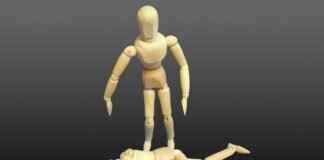Transforming your bedroom into a stylish haven is easier than you might think, especially with the right bed back designs. This article delves into a plethora of unique bed back styles that not only enhance the aesthetic appeal of your space but also provide comfort and support. Whether you’re looking for inspiration or practical tips, we have you covered!
Why Choose a Unique Bed Back Design?
A unique bed back design serves as a focal point in your bedroom, drawing attention and setting the tone for the entire space. It can reflect your personal style while offering the necessary support when sitting up in bed. By customizing your headboard, you can create a cozy atmosphere that resonates with your personality.
Popular Materials for Bed Back Designs
The material you choose for your bed back significantly influences its overall look and feel. Here are some popular options:
- Wooden Bed Backs: Timeless and elegant, wooden bed backs can come in various finishes and styles, from rustic to modern.
- Fabric Bed Backs: Soft and inviting, fabric options allow for creativity in patterns and textures.
- Metal Bed Backs: For a sleek and industrial vibe, metal headboards can be both durable and stylish.
Wooden Bed Backs: Timeless Elegance
Wooden bed backs are known for their classic appeal and durability. Different types of wood, such as oak, walnut, and pine, offer distinct characteristics. Consider the finish as well; a polished surface can lend sophistication, while a distressed look can evoke rustic charm.
Reclaimed Wood for Rustic Charm
Utilizing reclaimed wood introduces an eco-friendly option that adds character to your bedroom. Each piece tells a story, making your bed back a conversation starter.
Modern Plywood Options
Plywood is a versatile material that can be shaped into various designs. Modern plywood bed backs can provide a contemporary touch, with clean lines and minimalist aesthetics.
Fabric Bed Backs: Soft and Stylish
Fabric bed backs come in an array of colors and textures, allowing you to enhance your bedroom’s ambiance. Popular choices include velvet, linen, and cotton, each offering a different feel and look.
Upholstered vs. Non-Upholstered Designs
Understanding the difference between upholstered and non-upholstered bed backs is essential. Upholstered designs offer softness and comfort, while non-upholstered options are easier to clean and maintain. Weigh the pros and cons to find the best fit for your lifestyle.
Incorporating Color into Bed Back Designs
Color plays a crucial role in setting the mood in your bedroom. Here are some tips:
- Bold Colors for a Statement Piece: A vibrant bed back can serve as a striking focal point. Pair bold colors with neutral tones for balance.
- Neutral Tones for a Calming Effect: Soft, neutral colors create a serene atmosphere, perfect for relaxation.
DIY Bed Back Design Ideas
Creating your own bed back can be a rewarding experience. Here are some simple DIY ideas:
- Repurposing Old Furniture: Transforming old furniture into a bed back can be both creative and sustainable.
- Simple Upholstery Techniques: Basic upholstery skills can help you create a stunning bed back, giving your bedroom a fresh look.
Trends in Bed Back Design for 2023
Staying updated with the latest trends can inspire your bed back design choices:
- Geometric Patterns and Shapes: Bold geometric designs are making a comeback, adding a modern twist to your bedroom.
- Natural Elements and Textures: Incorporating natural materials like stone and wood can create a serene environment.
With these insights and inspirations, you can easily transform your bedroom with unique bed back designs. Choose materials and colors that resonate with your style, and don’t hesitate to get creative with DIY projects. Your bedroom should be a reflection of you, and a stunning bed back design can help achieve that.
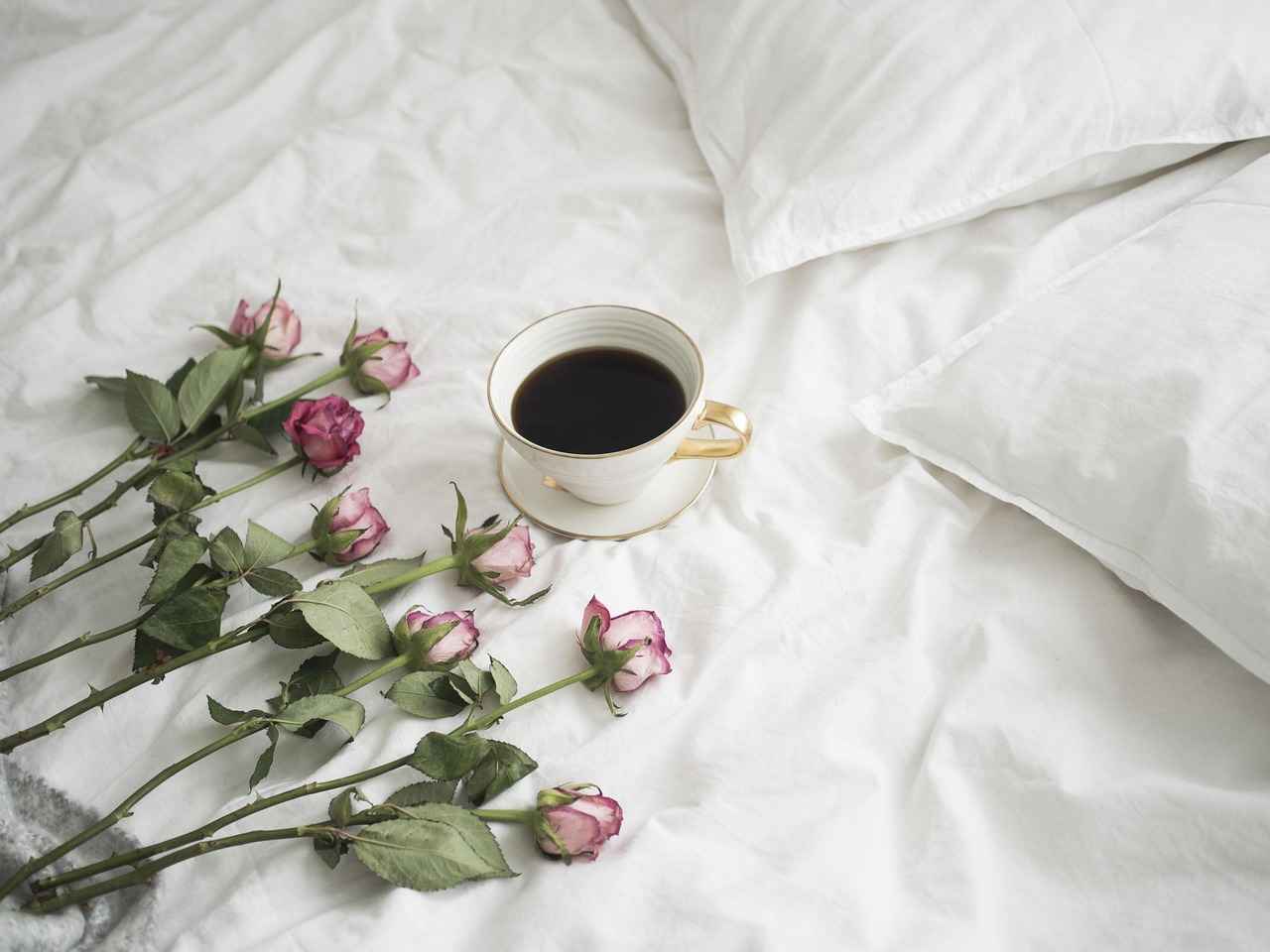
Why Choose a Unique Bed Back Design?
A unique bed back design can profoundly transform your bedroom, serving not only as a focal point but also as a source of comfort and support. When you think about the most important piece of furniture in your bedroom, the bed often comes to mind first. The headboard, or bed back, plays a crucial role in defining the overall aesthetic and functionality of this essential piece. Here are several reasons why investing in a unique bed back design is worthwhile.
- Enhanced Aesthetic Appeal: A well-designed bed back can elevate the entire look of your bedroom. Whether you prefer a modern or traditional style, a unique headboard can serve as a statement piece that draws attention and complements other design elements.
- Personalization: Customizing your bed back allows you to express your personal style. You can choose colors, materials, and shapes that resonate with your taste, making your bedroom feel more like your sanctuary.
- Comfort and Support: A well-designed bed back provides essential support for sitting up in bed, whether you’re reading a book or watching television. The right headboard can make your sleeping area more functional and comfortable.
- Increased Value: Unique and high-quality bed back designs can enhance the value of your home. Potential buyers often appreciate the details that reflect care and style, making your property more attractive in the housing market.
- Versatility: A unique bed back can adapt to various decor styles over time. As trends change or your personal style evolves, a well-chosen headboard can seamlessly integrate with new elements, saving you from the need to replace your entire bed.
Moreover, customizing your bed’s headboard opens the door to countless design possibilities. You can opt for a luxurious upholstered headboard for a plush look, or go for a minimalist wooden design that speaks to simplicity and elegance. Each choice comes with its own set of benefits, allowing you to tailor your bedroom to your specific needs and preferences.
In addition to aesthetics and comfort, a unique bed back can serve practical purposes. For instance, adding built-in storage or integrated lighting can enhance functionality without compromising on style. This multifunctionality is particularly beneficial in smaller spaces where maximizing every square inch counts.
Ultimately, the decision to choose a unique bed back design is not just about style; it’s about creating a space that feels inviting and personal. Whether you’re looking to make a bold statement or create a serene retreat, the right headboard can help you achieve your vision. Explore various designs, materials, and colors to find the perfect fit for your bedroom—your personal oasis awaits!
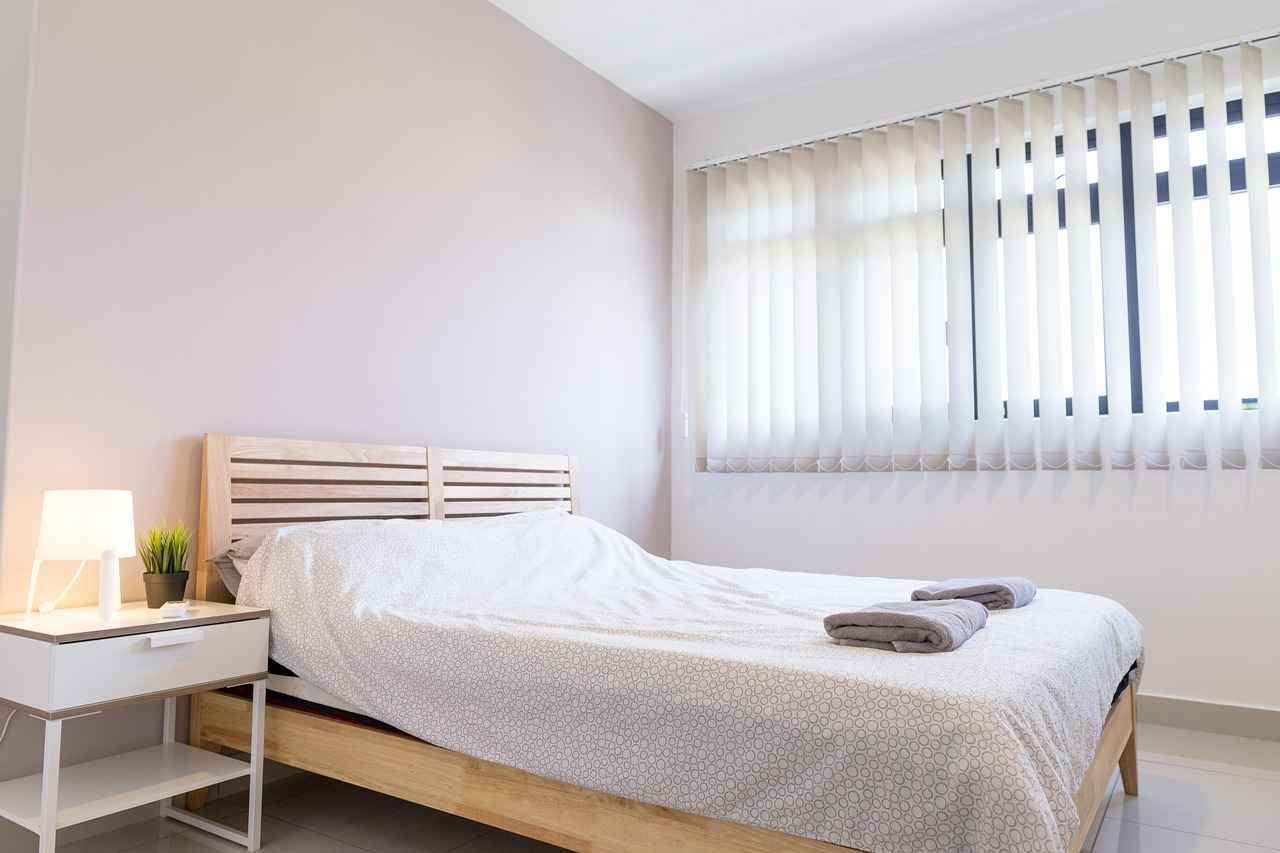
Popular Materials for Bed Back Designs
When it comes to designing a bedroom, the bed back or headboard is a crucial element that can significantly influence the overall aesthetic of the space. The choice of material for your bed back design plays a vital role in determining not only the visual appeal but also the comfort and durability of the piece. In this section, we will delve into various materials commonly used for bed backs, exploring their unique characteristics and how they can enhance your bedroom’s style.
Wooden bed backs are a popular choice due to their timeless elegance and versatility. From rich mahogany to light pine, different wood types come with distinct grains and finishes that can complement various design themes. Here are some options:
- Solid Wood: Known for its durability and classic look, solid wood can be stained or painted to match your decor.
- Reclaimed Wood: This eco-friendly option adds a rustic charm and unique character, perfect for a cozy, inviting atmosphere.
- Plywood: A modern choice, plywood can be shaped into sleek, contemporary designs, making it suitable for minimalist interiors.
If you’re looking for something softer and more inviting, fabric bed backs are an excellent option. Upholstered headboards can add texture and warmth to your bedroom. Here are some popular fabric choices:
- Velvet: Luxurious and soft, velvet adds a touch of sophistication and is available in a wide range of colors.
- Linen: This breathable fabric provides a casual, relaxed vibe, perfect for a beachy or bohemian style.
- Leather: For a sleek, modern look, leather or faux leather headboards can create a striking statement.
When choosing a bed back, it’s essential to understand the differences between upholstered and non-upholstered designs. Upholstered bed backs offer a cushioned feel, making them ideal for those who enjoy sitting up in bed to read or watch TV. However, they may require more maintenance to keep them clean and looking fresh. Non-upholstered designs, on the other hand, are typically easier to clean and maintain but may lack the same level of comfort.
While wood and fabric are the most common materials, metal bed backs are gaining popularity for their industrial charm. Metal headboards can range from sleek and modern to ornate and vintage, providing a unique look that can complement various decor styles. Additionally, some designers are experimenting with natural materials like stone or bamboo, which add an organic touch to the bedroom.
Ultimately, the choice of material for your bed back should reflect your personal style and the overall ambiance you wish to create in your bedroom. Consider factors such as color, texture, and functionality when making your decision. Whether you prefer the classic warmth of wood, the softness of fabric, or the modern edge of metal, there is a perfect bed back material waiting to transform your space.
Wooden Bed Backs: Timeless Elegance
Wooden bed backs are a quintessential choice for those seeking a blend of aesthetic appeal and durability in their bedroom design. Their timeless elegance not only enhances the overall look of the room but also offers a sturdy support system for your head and neck while reading or relaxing. In this article, we will explore the different types of wood and finishes available, as well as the unique characteristics that can elevate your bedroom’s design.
When selecting a wooden bed back, the type of wood plays a vital role in determining its appearance and longevity. Here are some popular options:
- Oak: Known for its strength and durability, oak offers a beautiful grain pattern. It can be finished in various stains to match your decor.
- Walnut: This rich, dark wood adds sophistication to any bedroom. Its natural variations in color make each piece unique.
- Pine: A more affordable option, pine is lightweight and easy to work with. It can be painted or stained to achieve the desired look.
- Maple: With a fine, consistent grain, maple is often used for contemporary designs. It can be easily finished to create a sleek appearance.
The finish applied to wooden bed backs can significantly affect their style and durability. Here are some popular finishes:
- Stains: Staining enhances the natural beauty of the wood while providing protection. Choose from light to dark stains to complement your bedroom decor.
- Paint: A painted finish can add a pop of color or a sleek, modern look. Consider using non-toxic paints for a healthier home environment.
- Varnish: Varnishing provides a glossy finish that protects the wood from scratches and moisture. It’s ideal for high-traffic areas.
Wooden bed backs can be crafted in various styles to suit your taste:
- Rustic: Incorporate reclaimed wood for a charming, rustic aesthetic that brings warmth and character to your space.
- Modern: Opt for sleek lines and minimalistic designs that emphasize the beauty of the wood grain.
- Traditional: Classic designs often feature intricate carvings or moldings, adding a touch of elegance to your bedroom.
Investing in a wooden bed back comes with several advantages:
- Durability: High-quality wood can last for decades, making it a worthwhile investment.
- Versatility: Wood complements various design styles, from rustic to contemporary.
- Eco-Friendly Options: Choosing sustainably sourced wood or reclaimed materials can contribute to a more environmentally friendly home.
In conclusion, wooden bed backs offer a perfect combination of timeless elegance and practicality. By selecting the right type of wood and finish, you can create a stunning focal point in your bedroom that reflects your personal style while providing comfort and support. Whether you prefer the rustic charm of reclaimed wood or the sleek lines of modern plywood, the options are endless. Make your bedroom a sanctuary with a beautifully designed wooden bed back.
Reclaimed Wood for Rustic Charm
Reclaimed wood is an exceptional choice for those looking to add a touch of rustic charm to their bedrooms. This eco-friendly material not only provides a unique aesthetic but also carries a story, often originating from old barns, factories, or other structures. By incorporating reclaimed wood into your bed back design, you can create a focal point that reflects both style and sustainability.
One of the most significant advantages of using reclaimed wood is its character. Each piece has its own history, with distinctive knots, grains, and colors that can’t be replicated. This individuality allows you to craft a bed back that is truly one-of-a-kind. Moreover, reclaimed wood often boasts a weathered finish, which can enhance the rustic vibe of your bedroom. The natural imperfections and textures of the wood add depth and warmth, making your space feel inviting.
When designing your bed back with reclaimed wood, consider the following tips to maximize its impact:
- Choose the Right Wood: Different types of reclaimed wood have varying aesthetics. For instance, barn wood can offer a more rugged look, while wood from old furniture might provide a smoother finish. Think about what style resonates with you.
- Mix and Match: Don’t be afraid to combine different types of reclaimed wood. Mixing wood tones can create a visually interesting bed back that showcases the diversity of the material.
- Consider the Size: The size of your bed back should complement the overall dimensions of your bed and bedroom. A larger piece can serve as a striking statement, while a smaller, more intricate design can add subtle charm.
- Finish and Treatment: Although reclaimed wood is often beautiful as is, applying a clear finish can enhance its natural beauty and protect it from wear. Consider using low-VOC finishes to maintain the eco-friendly aspect of your design.
Incorporating reclaimed wood into your bed back design not only enhances the aesthetic appeal of your bedroom but also promotes sustainability. By choosing this eco-friendly option, you contribute to reducing waste and supporting responsible sourcing practices.
Another essential aspect to consider is how reclaimed wood can blend with other design elements in your bedroom. Pairing the rustic charm of wood with modern furnishings can create a stunning contrast. For example, a reclaimed wood bed back can be beautifully complemented by sleek, contemporary bedding and minimalist decor.
Furthermore, reclaimed wood can also be a conversation starter. Guests will appreciate the unique story behind each piece, making your bedroom not just a place for rest but also a showcase of creativity and sustainability.
Ultimately, the incorporation of reclaimed wood into your bed back design allows you to create a space that is not only stylish but also rich in character and history. Embrace the beauty of imperfection and let your bed back tell a story that resonates with your values and aesthetic preferences.
Modern Plywood Options
Plywood has emerged as a popular choice in modern interior design, particularly for bed backs. This versatile material can be crafted into a variety of shapes and styles, making it ideal for those looking to add a contemporary touch to their bedrooms. Unlike traditional solid wood, plywood offers a unique blend of strength and flexibility, allowing for innovative designs that cater to diverse aesthetic preferences.
One of the key advantages of using plywood in bed back designs is its customizability. It can be easily cut, shaped, and finished to fit any design vision, from sleek and minimalist to intricate and artistic. The layering process in plywood not only enhances its durability but also allows for stunning visual effects, making it a favorite among designers and homeowners alike.
- Lightweight: Plywood is significantly lighter than solid wood, making it easier to handle and install.
- Cost-Effective: Generally more affordable than solid wood options, plywood allows for budget-friendly design without compromising on style.
- Eco-Friendly: Many plywood options are sourced from sustainable forests, making them an environmentally responsible choice.
- Versatile Finishes: Plywood can be stained, painted, or left natural, offering endless possibilities for customization.
When considering modern plywood bed backs, it’s essential to explore different design styles. For instance, a scandinavian-inspired headboard made from light-colored plywood can create a bright and airy feel in your bedroom. Alternatively, a dark-stained plywood headboard with geometric cutouts can serve as a striking focal point, adding depth and interest to your space.
- Layered Textures: Combine plywood with other materials such as fabric or metal for a mixed-media approach.
- Painted Patterns: Use bold colors or patterns to transform a simple plywood bed back into a statement piece.
- Integrated Lighting: Incorporate LED lighting into the design for a modern touch that enhances ambiance.
For those who enjoy DIY projects, creating a plywood bed back can be a rewarding endeavor. Simple tools and techniques can be employed to craft a personalized headboard that reflects your unique style. Whether you choose to paint it, stain it, or leave it raw, the result will undoubtedly elevate your bedroom decor.
Incorporating into your bedroom not only enhances the aesthetic appeal but also provides practical benefits. With its durability, versatility, and eco-friendliness, plywood stands out as a material that meets the needs of contemporary living. As you explore the possibilities, consider how a well-designed plywood bed back can transform your space into a stylish, functional retreat.
Fabric Bed Backs: Soft and Stylish
Fabric bed backs have emerged as a popular choice for homeowners seeking to combine comfort with style. These headboard designs not only enhance the visual appeal of a bedroom but also provide a cozy backdrop for relaxation. In this article, we will explore various fabric options, their benefits, and how they can significantly enhance your bedroom’s ambiance.
One of the primary advantages of fabric bed backs is their versatility. Available in a plethora of colors, patterns, and textures, fabric headboards can be tailored to suit any interior design style, whether it be modern, traditional, or eclectic. Here are some popular fabric choices:
- Velvet: Known for its luxurious texture, velvet adds a touch of elegance and sophistication to any bedroom. It is soft to the touch and comes in a variety of rich colors.
- Linen: A breathable and durable option, linen offers a more casual look. Its natural texture can create a relaxed atmosphere, perfect for a cozy retreat.
- Cotton: This fabric is easy to maintain and comes in numerous prints and colors. Cotton bed backs are ideal for families and those looking for a practical yet stylish option.
- Chenille: With its unique texture and warmth, chenille offers both comfort and style. It is particularly suited for a more inviting and cozy bedroom setting.
When selecting a fabric for your bed back, consider the overall theme of your bedroom. A bold patterned fabric can serve as a statement piece, while a neutral color can create a calming effect. Additionally, think about the maintenance of the fabric. Some materials may require special care, while others can be easily cleaned with a damp cloth.
Another important factor to consider when choosing a fabric bed back is the padding. A well-padded headboard not only enhances comfort when sitting up in bed but also adds a layer of sophistication to the design. Upholstered bed backs provide a plush feel, making them perfect for those who enjoy reading or watching television in bed.
Incorporating a fabric bed back can also enhance the ambiance of your bedroom. The right fabric can help to soften the overall look of the room, making it feel more inviting. For example, a soft, muted fabric can create a serene environment, while vibrant colors can energize the space. Additionally, fabric bed backs can be easily updated with seasonal changes or personal preferences by simply swapping out the fabric or adding decorative pillows.
For those interested in a more personalized touch, DIY fabric bed backs are an excellent option. With basic upholstery skills, you can create a unique design that reflects your style. Consider repurposing old furniture or using a simple wooden frame as the base for your fabric headboard. This approach not only saves money but also allows you to express your creativity.
In summary, fabric bed backs are a stylish and comfortable addition to any bedroom. With a variety of materials and designs available, they can enhance the overall ambiance of your space while providing practical benefits. Whether you choose a plush velvet or a casual linen, a fabric bed back can transform your bedroom into a cozy sanctuary.
Upholstered vs. Non-Upholstered Designs
When it comes to designing your bedroom, the choice of bed back style is crucial. Upholstered and non-upholstered bed backs each offer unique advantages and disadvantages that can significantly influence the overall aesthetic and functionality of your space. Understanding these differences is essential for making an informed decision that aligns with your personal style and needs.
Upholstered Bed Backs
- Comfort: One of the primary benefits of upholstered bed backs is the added comfort they provide. The soft padding allows for a cozy feel, making it ideal for those who enjoy reading or watching TV in bed.
- Design Versatility: Upholstered options come in a wide range of fabrics, colors, and patterns, allowing for extensive customization. You can easily match your bed back to your bedroom decor, creating a cohesive look.
- Sound Absorption: The fabric used in upholstered bed backs can help absorb sound, contributing to a quieter bedroom environment.
- Maintenance: On the downside, upholstered bed backs may require more maintenance. Stains and wear can be more noticeable, necessitating regular cleaning or even reupholstering over time.
Non-Upholstered Bed Backs
- Durability: Non-upholstered designs, often made from materials like wood or metal, tend to be more durable and resistant to wear and tear. They can last for many years with minimal upkeep.
- Easy Maintenance: Cleaning is simpler with non-upholstered bed backs. A quick wipe down is usually all that’s needed to keep them looking fresh.
- Style Statement: Non-upholstered bed backs can make a bold statement, with designs ranging from sleek and modern to rustic and traditional. They can serve as a striking focal point in your bedroom.
- Comfort Consideration: However, they may lack the comfort that upholstered options provide. Leaning against a hard surface can be less inviting, especially for those who spend time in bed for relaxation.
Ultimately, the choice between upholstered and non-upholstered bed backs depends on your personal preferences and lifestyle. If you prioritize comfort and design flexibility, an upholstered bed back may be the right choice for you. Conversely, if you seek durability and low maintenance, a non-upholstered option could be more suitable. Consider your bedroom’s overall design, how you use your space, and your maintenance preferences to determine the best fit for your home.
In conclusion, understanding the pros and cons of both upholstered and non-upholstered bed backs can guide you in selecting the perfect design for your bedroom. By weighing the comfort, style, and maintenance aspects of each option, you’ll be better equipped to create a space that truly reflects your personal style while meeting your practical needs.
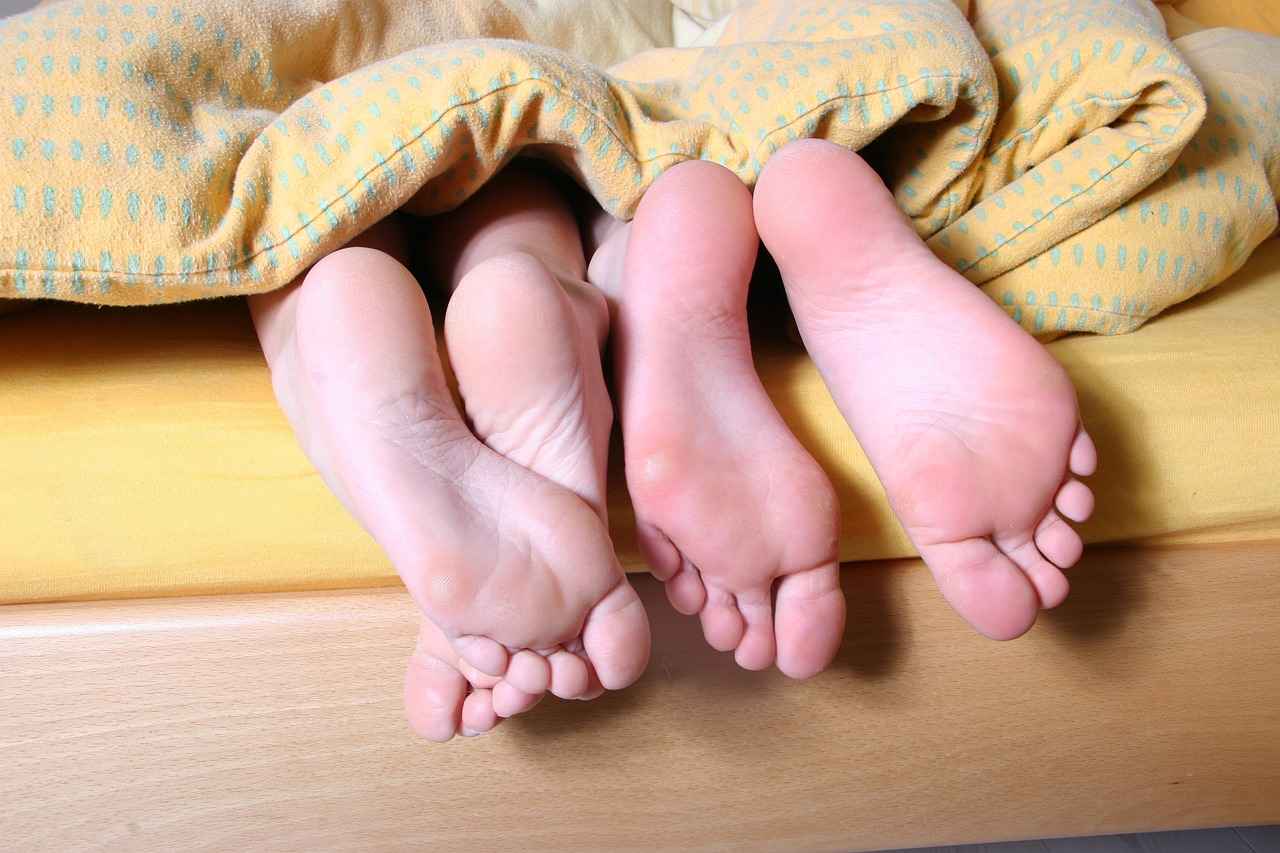
Incorporating Color into Bed Back Designs
Color is a fundamental element in interior design, especially in the bedroom, where it can significantly influence mood and ambiance. When choosing colors for your bed back design, it’s essential to consider how these hues will interact with the rest of your decor and contribute to a harmonious atmosphere. This guide will help you navigate the world of color in bed back designs, ensuring you create a space that feels both inviting and stylish.
Understanding Color Psychology
Before diving into specific color choices, it’s important to understand the psychology behind colors. Colors can evoke emotions and set the tone for a space. For instance:
- Blue: Known for its calming effects, blue can help create a serene environment ideal for rest.
- Yellow: This color brings warmth and cheerfulness, making the bedroom feel more lively.
- Green: Associated with nature, green promotes relaxation and rejuvenation.
- Red: A bold choice that can energize the space, red is perfect for those looking to make a statement.
Choosing the Right Color Scheme
When selecting colors for your bed back design, consider the overall color scheme of your bedroom. Here are some popular approaches:
- Monochromatic: Using varying shades of a single color can create a cohesive and sophisticated look.
- Complementary: Pairing colors that are opposite each other on the color wheel can create a vibrant contrast, adding depth to your design.
- Analogous: Choosing colors that are next to each other on the wheel can produce a harmonious and serene palette.
Incorporating Bold Colors for Impact
If you want your bed back to serve as a statement piece, consider using bold colors. A deep navy blue or a rich burgundy can draw attention and serve as a stunning focal point. To effectively pair bold colors, consider the following:
- Use neutral tones in other elements of the bedroom, such as bedding and curtains, to balance the intensity.
- Incorporate accessories that echo the bold color, like throw pillows or artwork, to create a cohesive look.
Neutral Tones for a Calming Effect
For those seeking a more tranquil environment, neutral tones can be an excellent choice. Shades of beige, gray, or soft white can create a peaceful retreat. Here’s how to enhance your bed back design with neutrals:
- Layer different textures to add visual interest, such as a tufted headboard or a wooden backdrop.
- Introduce pops of color through accessories, like a colorful throw or a patterned rug, to keep the space from feeling too flat.
Accent Colors: The Finishing Touch
Accent colors can bring your bed back design to life. Consider adding small touches of color through decorative elements, such as:
- Artwork that incorporates your chosen accent color.
- Bed linens or cushions that complement the main color scheme.
Experimenting with Patterns
Patterns can add a dynamic element to your bed back design. Whether you opt for geometric shapes, floral prints, or stripes, patterns can enhance the visual appeal of your bedroom. Here are some tips for using patterns effectively:
- Mix patterns with caution; ensure they share a common color palette to maintain harmony.
- Use patterned fabrics on your bed back while keeping other elements simple to avoid overwhelming the space.
Conclusion
Incorporating color into your bed back design is an exciting opportunity to express your style and create a personalized sanctuary. By understanding color psychology, selecting the right color scheme, and experimenting with bold or neutral tones, you can craft a beautiful and harmonious bedroom that reflects your personality and promotes relaxation.
Bold Colors for a Statement Piece
When it comes to bedroom design, one of the most impactful choices you can make is the color of your bed back. Bold colors can transform your bed back into a striking focal point, instantly elevating the overall aesthetic of your space. This section will guide you through the process of selecting and pairing colors effectively to achieve maximum impact.
First and foremost, consider the emotional response that different colors evoke. For instance, vibrant reds and oranges can create a sense of energy and warmth, making your bedroom feel inviting and lively. On the other hand, deep blues and greens can evoke feelings of tranquility and calmness, perfect for creating a serene retreat. Understanding the psychological effects of color can help you choose hues that align with the atmosphere you wish to cultivate.
Next, think about how to pair these bold colors with existing elements in your bedroom. Here are some tips:
- Accent Colors: Use bold colors as accents. For example, a bright yellow bed back can be paired with neutral bedding and accessories to create a balanced look that draws attention without overwhelming the space.
- Color Blocking: Consider color blocking by combining two or more bold colors. For instance, a navy blue bed back paired with a mustard yellow throw pillow can create a striking visual contrast that adds depth and interest to your design.
- Complementary Colors: Use the color wheel to find complementary colors that enhance each other. For example, a rich emerald green bed back can be beautifully complemented by soft blush pink accents.
Moreover, the finish of the color can also influence the overall effect. A matte finish can create a subtle sophistication, while a glossy finish can add a modern touch and reflect light, making the space feel larger. Consider the lighting in your bedroom as well; natural light can change how colors appear throughout the day, so it’s essential to test your chosen colors in different lighting conditions.
In addition to color selection, the shape and design of your bed back can enhance its boldness. A geometric design painted in a vibrant hue can serve as a modern art piece, while a classic upholstered headboard in a bold fabric can add both comfort and style. Mixing textures, such as a velvet bed back with smooth linens, can create a visually appealing contrast that draws the eye.
Lastly, don’t forget to incorporate personal elements into your design. Adding framed artwork or decorative items in similar bold colors can unify the space and create a cohesive look. Remember, your bedroom should reflect your personality, so feel free to experiment with different combinations until you find the perfect balance.
In conclusion, using bold colors for your bed back design can significantly enhance the visual appeal of your bedroom. By understanding color psychology, effective pairing techniques, and the impact of different finishes, you can create a stunning focal point that not only elevates your space but also resonates with your personal style.
Neutral Tones for a Calming Effect
Neutral tones are a popular choice for creating a calming and serene atmosphere in any bedroom. These colors, which include shades of beige, gray, taupe, and soft whites, can transform your space into a peaceful retreat. In this section, we will explore how to effectively incorporate neutral tones into your bed back design, enhancing both style and tranquility.
Why Neutral Tones Matter
Using neutral colors in your bedroom can have a profound effect on your mood and overall sense of well-being. These hues are known for their ability to promote relaxation and reduce stress, making them ideal for a space dedicated to rest. By choosing a neutral palette for your bed back design, you create a harmonious backdrop that allows other elements in your bedroom to shine.
Choosing the Right Shades
When selecting neutral tones for your bed back, consider the following:
- Warm Neutrals: Shades like creamy beige and warm taupe can add a cozy feel to your bedroom, making it inviting and comfortable.
- Cool Neutrals: Light grays and soft whites can create a more modern and airy atmosphere, perfect for smaller spaces.
- Textured Neutrals: Incorporating textures, such as linen or velvet, can enhance the visual interest of neutral tones while maintaining a calming effect.
Incorporating Neutral Tones in Bed Back Design
There are several ways to integrate neutral tones into your bed back design:
- Upholstered Headboards: Choose a fabric in a neutral tone for your headboard. This not only adds comfort but also allows for a soft, inviting look.
- Painted Wood: If you prefer a wooden headboard, consider painting it in a soft gray or beige. This can modernize the look while keeping the space serene.
- Accent Wall: Create a bed back effect by painting the wall behind your bed in a neutral shade. This can visually expand the space and serve as a perfect backdrop for your bedding.
Combining Neutral Tones with Other Elements
While neutral tones are beautiful on their own, they can also be paired with other colors and materials to enhance your bedroom’s design:
- Natural Textures: Incorporate elements like wood, stone, or plants to add warmth and depth to your neutral palette.
- Accent Colors: Use soft pastels or muted tones in your bedding and accessories to create a subtle contrast without overwhelming the space.
- Layering: Layer different shades of neutrals in your bed linens and pillows for a sophisticated look that maintains a calming effect.
Conclusion
Incorporating neutral tones into your bed back design not only enhances the aesthetic appeal of your bedroom but also creates a tranquil environment conducive to relaxation. By thoughtfully selecting shades and combining them with various materials, you can achieve a peaceful retreat that reflects your personal style while ensuring comfort and serenity.
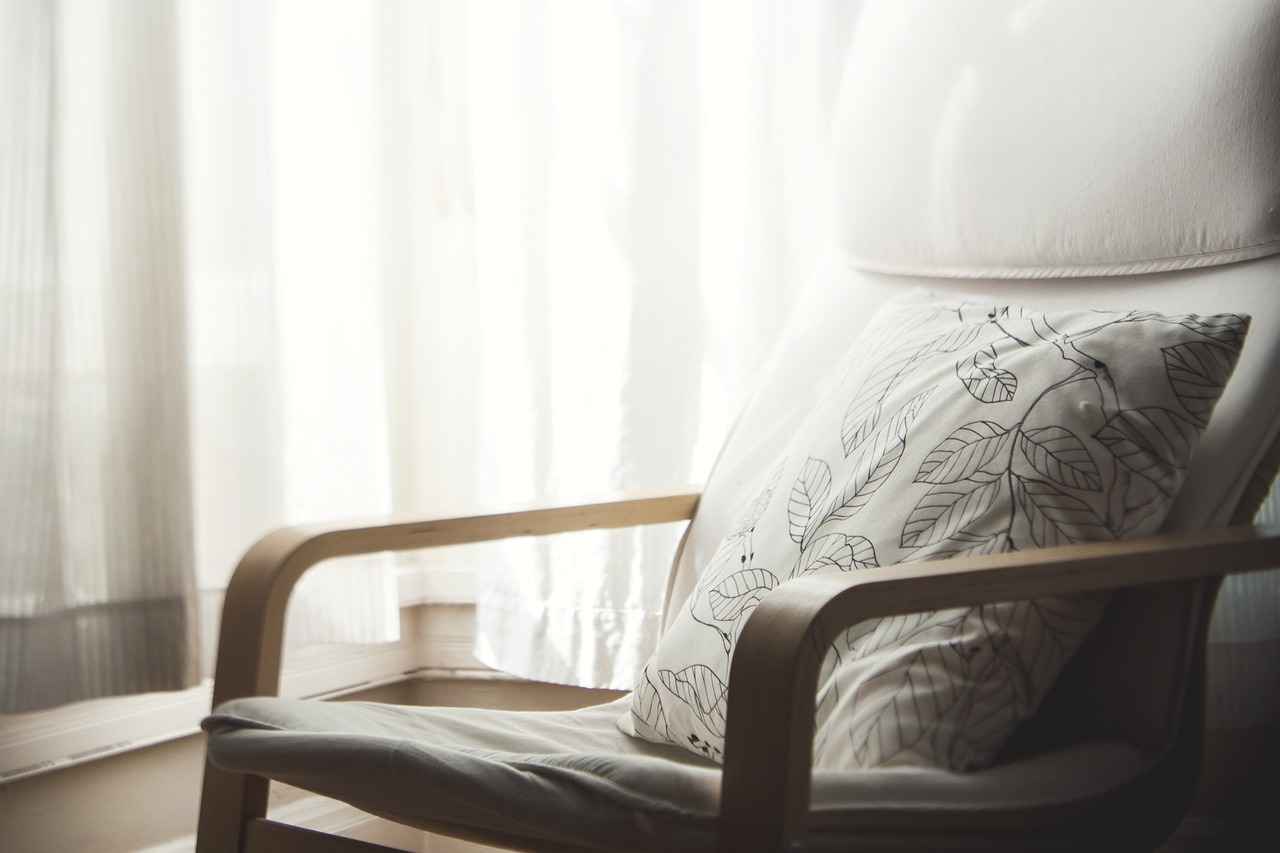
DIY Bed Back Design Ideas
Creating a personalized bed back is not only a fun project but also a fantastic way to enhance the overall aesthetic of your bedroom. With a little creativity and some basic tools, you can transform your sleeping space into a stylish sanctuary. Below are some innovative DIY ideas that cater to various tastes and budgets, allowing you to craft a unique headboard that reflects your personality.
- Repurposing Old Furniture: One of the most sustainable approaches to designing a bed back is to repurpose old furniture. Consider using an antique door, a vintage window frame, or even an old dresser’s back panel. With a bit of sanding and paint, these items can become stunning headboards that add character and history to your bedroom.
- Simple Upholstery Techniques: If you want to add a soft touch to your bed back, consider reupholstering an old headboard or creating one from scratch. Start with a piece of plywood cut to your desired size, then add foam padding and fabric of your choice. Use a staple gun to secure the fabric neatly, and you’ll have a cozy, inviting headboard.
- Wooden Pallet Designs: Wooden pallets are an affordable and trendy option for DIY bed backs. They can be easily assembled to create a rustic look. Simply disassemble the pallets, sand them down, and stain or paint them to match your bedroom decor. Arrange the planks in a pattern that suits your style, and secure them to the wall for a sturdy headboard.
- Fabric Wall Art: Create a fabric wall art piece that doubles as a bed back. Choose a large canvas or a piece of plywood, and cover it with your favorite fabric. This not only adds color and texture to your room but also serves as a soft backdrop for your bed.
- Geometric Patterns: For a modern twist, consider creating a geometric-patterned bed back. Use wood or foam boards to cut out shapes, then paint them in contrasting colors. Arrange the shapes on your wall to create a striking visual effect that complements your bedroom decor.
- Macrame Headboards: If you enjoy crafting, a macrame headboard can be a beautiful addition to your bedroom. Using macrame cord, create intricate knot designs that hang from a wooden dowel. This bohemian style adds texture and warmth to your space.
- Wall Decals and Stickers: For a quick and easy transformation, consider using wall decals or stickers that mimic the look of a headboard. This option is perfect for renters or those who want a temporary solution. Choose designs that resonate with your style, whether they are floral, abstract, or geometric.
- Mirror Headboards: Mirrors can create an illusion of space and light in your bedroom. Consider using a large, framed mirror as a bed back. Not only does it serve as a functional piece, but it also adds elegance and depth to your decor.
By embracing these DIY bed back design ideas, you can create a unique focal point in your bedroom that reflects your personal style. Each project allows for creativity and customization, ensuring that your sleeping space is not only comfortable but also beautifully designed. Whether you choose to repurpose old furniture, experiment with fabrics, or play with patterns, the possibilities are endless. Get inspired and start crafting your dream bed back today!
Repurposing Old Furniture
into a bed back is not only a sustainable choice but also a creative outlet that allows you to express your personal style. By transforming items you already own, you can create a unique headboard that enhances your bedroom’s aesthetic while contributing to environmental conservation. This guide will walk you through the process of repurposing furniture into stunning bed backs, offering tips and inspiration along the way.
Repurposing old furniture is a fantastic way to breathe new life into items that may otherwise end up in a landfill. It promotes sustainability and reduces waste. Additionally, it can save you money while allowing for a customized design that reflects your taste. Here are some popular furniture items that can be easily transformed into bed backs:
- Doors: Old doors can serve as a striking headboard with their unique textures and colors.
- Wooden Pallets: These versatile pieces can be stacked or arranged to create a rustic look.
- Dressers: The front of a dresser can be repurposed to create a chic and functional headboard.
- Mirrors: An oversized mirror can add depth and light to your bedroom while serving as a beautiful backdrop for your bed.
Here are some simple steps to guide you through the process:
1. Select Your Furniture: Choose an item that resonates with your style and fits the dimensions of your bed.2. Prepare the Surface: Clean and sand the furniture to remove any old paint or finish.3. Customize the Design: Consider painting, staining, or adding fabric to enhance the appearance.4. Secure the Headboard: Attach the repurposed piece securely to the wall or bed frame for stability.5. Accessorize: Add decorative elements like lights, artwork, or pillows to complete the look.
Here are some innovative ideas to inspire your repurposing project:
- Patchwork Headboard: Combine multiple pieces of old furniture, like cabinet doors or shutters, to create a one-of-a-kind patchwork headboard.
- Fabric-Covered Headboard: Use an old upholstered chair or sofa to create a soft and inviting headboard. Simply cut the fabric to size and attach it to a sturdy backing.
- Vintage Window Frames: Old window frames can create a charming, farmhouse-style headboard. Paint them in a color that complements your bedroom decor.
Repurposing old furniture into a bed back offers numerous benefits:
- Cost-Effective: Utilizing items you already own can significantly reduce decorating costs.
- Personal Touch: Each piece tells a story and adds character to your space.
- Environmental Impact: By repurposing, you contribute to a more sustainable lifestyle.
In summary, into a bed back is an excellent way to combine creativity with sustainability. With a little imagination and effort, you can transform everyday items into stunning headboards that elevate your bedroom’s style and charm.
Simple Upholstery Techniques
In the realm of interior design, upholstery plays a vital role in enhancing the aesthetic appeal and comfort of furniture, particularly bed backs. If you’re looking to breathe new life into your bedroom, learning some can be incredibly rewarding. This guide will walk you through the essential steps needed to reupholster a headboard, ensuring you achieve a fresh and stylish look.
- Gather Your Materials: Before you start, ensure you have all necessary materials. You will need fabric, foam padding, batting, a staple gun, scissors, a measuring tape, and a screwdriver.
- Choose Your Fabric: Selecting the right fabric is crucial. Consider durability and color; fabrics like cotton, linen, or velvet are popular choices. Aim for a fabric that complements your bedroom decor.
- Remove the Old Upholstery: Carefully detach the existing upholstery from the headboard. Use a screwdriver to remove any screws and gently pull away staples. This step requires patience to avoid damaging the underlying structure.
- Prepare the Headboard: Once the old fabric is removed, inspect the headboard for any damage. Repair any dents or scratches and clean the surface thoroughly before proceeding.
- Add Foam Padding: For added comfort, attach foam padding to the headboard. Cut the foam to size and secure it with adhesive spray. Ensure it is evenly distributed for a smooth finish.
- Wrap with Batting: After the foam is in place, wrap the headboard with batting. This layer adds softness and helps to create a professional look. Trim the batting to fit and secure it with a staple gun.
- Attach the New Fabric: Lay your chosen fabric over the batting, ensuring it is centered. Pull the fabric taut and staple it to the back of the headboard. Start from the center and work your way outwards to avoid wrinkles.
- Finish Edges Neatly: Once the fabric is stapled down, trim any excess material. For a polished look, consider adding a decorative trim or piping along the edges.
- Reattach the Headboard: Finally, reattach the headboard to your bed frame. Ensure it is securely fastened and stands firm.
By following these , you can transform an ordinary headboard into a stunning focal point in your bedroom. Not only does this DIY project allow for personalization, but it also offers a sense of accomplishment. The result will be a beautifully upholstered bed back that reflects your unique style and enhances the overall ambiance of your space.
Remember, the key to successful upholstery is patience and attention to detail. Take your time with each step, and don’t hesitate to seek out additional resources or tutorials if needed. Happy upholstering!
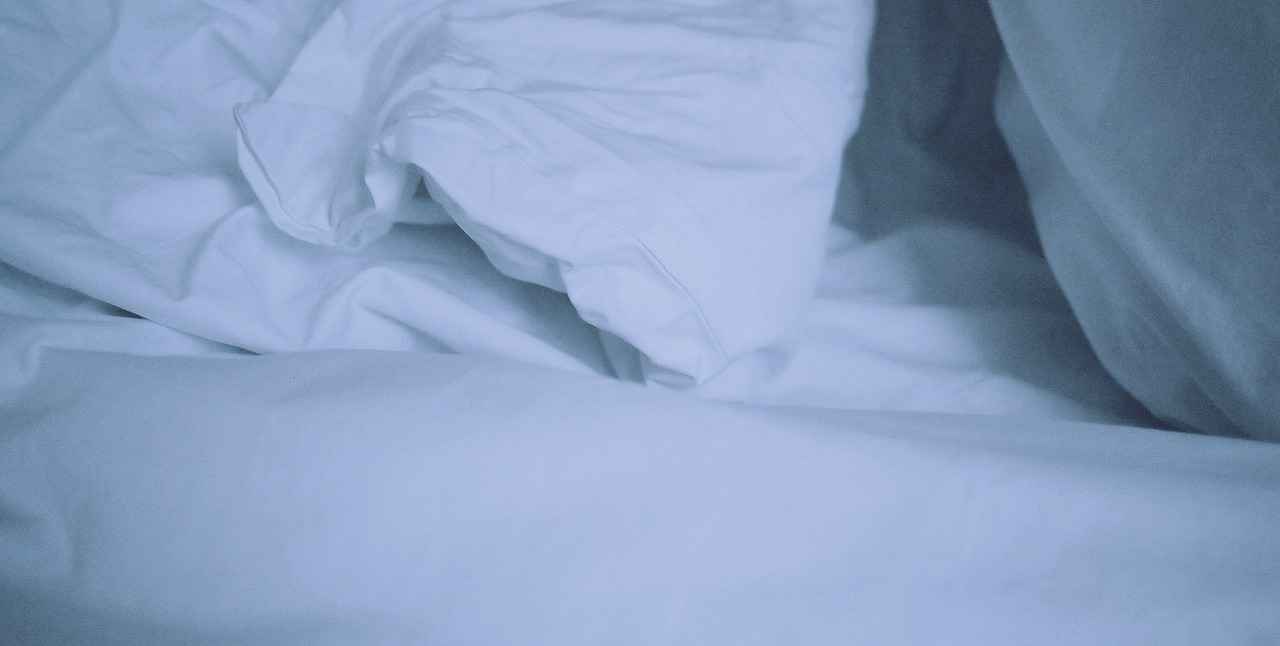
Trends in Bed Back Design for 2023
Staying updated with the latest trends can inspire your bed back design choices. As we delve into 2023, several exciting trends are emerging that can significantly refresh your bedroom style. Understanding these trends not only enhances the visual appeal of your space but also allows you to express your personality through design.
One of the most striking trends this year is the use of geometric patterns. These bold shapes can transform a simple bed back into a stunning focal point. Whether you choose sharp angles or soft curves, geometric designs create a modern aesthetic that complements various bedroom styles. Consider incorporating elements like hexagons or chevrons in your headboard design to add a contemporary flair.
In 2023, there is a significant shift towards embracing natural elements in bedroom designs. Materials such as stone, wood, and greenery are being integrated into bed back designs to create a serene and organic environment. For instance, a headboard made from reclaimed wood not only adds texture but also introduces an eco-friendly aspect to your decor. Pairing your bed back with indoor plants can further enhance this natural vibe, making your bedroom feel like a tranquil retreat.
Color is a powerful tool in design, and this year, bold hues are making a comeback. Opting for a vibrant color for your bed back can make a striking statement in your bedroom. Shades like deep navy, emerald green, or even rich burgundy can draw the eye and create a dramatic effect. When using bold colors, it’s essential to balance them with neutral tones in the rest of the room to maintain harmony.
Upholstered bed backs continue to be a popular choice, but in 2023, the focus is on texture. Fabrics such as velvet, linen, and even leather are being used to create luxurious headboards. Textured upholstery not only adds depth to your design but also enhances comfort. Consider tufted designs or adding embellishments like buttons or piping to elevate the look of your bed back.
Customization is key in modern design, and this trend is reflected in bed back designs as well. Many homeowners are opting for modular headboards that allow for personalization based on their specific needs and preferences. These designs can be adjusted in size, shape, and even color, making them a versatile choice for any bedroom. This trend encourages creativity, allowing you to create a unique piece that perfectly fits your space.
As technology becomes more integrated into our daily lives, it’s no surprise that it’s also finding its way into bedroom designs. In 2023, smart bed backs equipped with features like built-in lighting, charging ports, and even sound systems are gaining popularity. These innovative designs not only enhance functionality but also contribute to a modern and sophisticated ambiance.
By keeping an eye on these trends, you can easily refresh your bedroom style with innovative bed back designs. Whether you prefer bold colors, natural elements, or customizable options, there are countless ways to express your style and create a space that feels uniquely yours. Embrace these trends to transform your bedroom into a stylish haven that reflects your personality and meets your needs.
Geometric Patterns and Shapes
Geometric patterns are experiencing a significant resurgence in bed back designs, offering a fresh and contemporary twist to traditional bedroom aesthetics. These bold shapes not only add visual interest but also create a dynamic atmosphere in your personal space. In this article, we will explore how to effectively incorporate geometric patterns into your bedroom design, enhancing both style and comfort.
One of the primary reasons to embrace geometric patterns in your bed back design is their versatility. These designs can range from simple shapes to intricate compositions, allowing you to customize your space according to your personal taste. Whether you prefer a minimalist approach with subtle patterns or a more vibrant look with eye-catching designs, there is a geometric style to suit every bedroom.
- Choosing the Right Pattern: Start by selecting a geometric pattern that resonates with your overall bedroom theme. For a modern look, consider sharp angles and bold lines, while softer curves can create a more relaxed atmosphere.
- Color Coordination: When incorporating geometric patterns, color plays a crucial role. Opt for contrasting colors to make the shapes stand out, or choose a monochromatic palette for a sophisticated look.
- Material Selection: The material of your bed back can enhance the geometric design. For example, a fabric headboard with a geometric print can soften the overall look, while a wooden or metal design can add an industrial edge.
To effectively integrate geometric patterns into your bedroom, consider the following practical tips:
1. **Accent Wall:** Create an accent wall behind your bed using geometric wallpaper or decals. This will serve as a striking focal point in your bedroom.2. **Custom Headboards:** Design a custom headboard featuring geometric shapes. This can be done using plywood or upholstered materials to add texture.3. **Bedding and Accessories:** Incorporate geometric patterns into your bedding, throw pillows, or rugs. This will tie the room together and create a cohesive look.4. **Art and Decor:** Use wall art or decorative items that feature geometric designs to complement your bed back. This adds depth and interest to the overall design.
Moreover, the psychological impact of geometric patterns should not be overlooked. These shapes can evoke feelings of stability and order, making your bedroom a more relaxing environment. The clean lines and structured forms can help create a sense of calm, which is essential for a restful night’s sleep.
As you embrace geometric patterns in your bed back design, remember to keep balance in mind. Overloading your space with too many bold shapes can lead to visual clutter. Instead, aim for harmony by mixing geometric elements with softer textures and colors. This approach will ensure that your bedroom remains a sanctuary of peace and style.
In conclusion, incorporating geometric patterns into your bed back design is an excellent way to modernize your bedroom. By choosing the right patterns, colors, and materials, you can create a unique and inviting space that reflects your personal style. With careful planning and creativity, your bedroom can transform into a stunning retreat that showcases the beauty of geometric design.
Natural Elements and Textures
In recent years, the incorporation of natural elements into bedroom designs has gained significant popularity. Elements such as stone and greenery not only enhance the aesthetic appeal of a bedroom but also create a calming and serene environment. By integrating these textures into your bed back design, you can transform your sleeping space into a tranquil retreat.
Why Choose Natural Elements?
Natural materials bring a sense of warmth and comfort to any bedroom. They create a connection to the outdoors, promoting relaxation and well-being. Here are some compelling reasons to consider:
- Health Benefits: Natural materials like wood and stone can improve indoor air quality and reduce allergens.
- Aesthetic Appeal: They add unique textures and colors, making your bedroom feel more inviting.
- Sustainability: Many natural materials are eco-friendly and sustainable, appealing to environmentally conscious homeowners.
Incorporating Stone into Your Bed Back Design
Stone can be a striking choice for a bed back design. Its durability and timeless beauty make it an ideal option for creating a stunning focal point. Here are a few ideas:
- Accent Wall: Use natural stone slabs to create an accent wall behind your bed. This not only adds texture but also serves as a dramatic backdrop.
- Stone Tiles: Consider using stone tiles to cover a headboard or bed back. This can give a sophisticated look and feel.
- Mixed Materials: Combine stone with wood or fabric for a unique look that balances hardness with softness.
Integrating Greenery into Your Bedroom
Incorporating plants into your bedroom design can enhance the natural feel of the space. Here are some tips on how to do this:
- Potted Plants: Place potted plants on either side of the bed or on a shelf above the headboard for a fresh touch.
- Vertical Gardens: Create a vertical garden on the wall behind your bed. This not only saves space but also adds a lush, green element.
- Natural Artwork: Use framed botanical prints or create a gallery wall with images of plants to bring nature indoors.
Combining Textures for a Cohesive Look
To achieve a harmonious design, it’s essential to combine different textures effectively. Here are some strategies:
- Layering: Layer different materials, such as a wooden bed frame with a stone back and soft fabric pillows, to create depth and interest.
- Color Coordination: Choose colors that complement the natural elements. Earthy tones like greens, browns, and grays can unify the space.
- Balance: Ensure that the visual weight of the materials is balanced. If you have a heavy stone back, consider lighter bedding or decor.
By thoughtfully integrating natural elements into your bed back design, you can create a serene and inviting bedroom that reflects your style and promotes relaxation. Embrace the beauty of nature, and let it inspire your home decor choices.
Frequently Asked Questions
- What are the benefits of a unique bed back design?
A unique bed back design can serve as a stunning focal point in your bedroom, enhancing both aesthetics and comfort. It allows you to express your personal style while providing necessary support for those cozy nights in bed.
- What materials are best for bed back designs?
Popular materials include wood, fabric, and even metal. Wooden bed backs offer timeless elegance, while fabric options provide softness and comfort. Choosing the right material can significantly impact the overall vibe of your bedroom.
- Can I create a DIY bed back?
Absolutely! DIY bed backs are a fantastic way to personalize your space and save money. You can repurpose old furniture or try simple upholstery techniques to craft a stunning headboard that reflects your style.
- What color schemes work best for bed backs?
Bold colors can make a striking statement, while neutral tones create a calming atmosphere. Consider your bedroom’s overall color palette and choose a bed back that complements it for a harmonious look.
- What are the current trends in bed back design?
In 2023, geometric patterns and natural elements are trending. Incorporating these designs can add a modern twist and bring a touch of nature into your bedroom, creating a serene and stylish environment.












